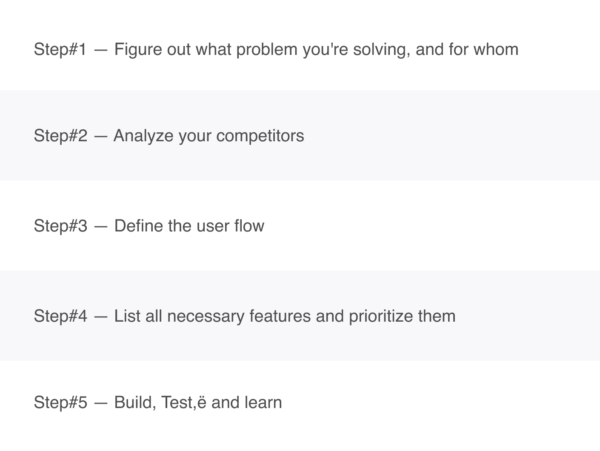Public PaaS vendors offer middleware that enables developers to set up, configure and control servers and databases without needing to set up the infrastructure. As a result, public PaaS and IaaS run together, with PaaS operating on top of a vendor’s IaaS infrastructure while using the public cloud. Unfortunately, this means the client is tied to a single public cloud option that they might not want to use. In terms of disadvantages, however, service availability or resilience can be a concern with PaaS. If a provider experiences a service outage or other infrastructure disruption, this can adversely affect customers and result in costly lapses of productivity. However, PaaS providers will normally offer and support relatively high uptimes — though availability is governed by the provider’s service-level agreement (SLA).
Service vendors don’t impose ready-made solutions, they only build a comfortable environment for efficient and fruitful work. The increased speed of development and deployment is among the top business advantages of PaaS in cloud computing. Since developers have access to numerous automated tools and technological innovations, they can significantly speed up the creation of apps. Hence, the app development lifecycle is reduced, compared to the traditional one, and more new products can enter the market faster. This feature is one of the key competitive advantages for any business.
Overcome potential drawbacks with private PaaS
That’s why it’s very important to be confident in your business partner and be prepared for some unforeseen circumstances that may happen to even the most reliable provider. At the very least, you should perform your own data backup, for your peace of mind. PaaS experts constantly perform all the necessary component updates and security patches for you to get them automatically. This ensures that your application is running on the latest stack, saving your time and resources. Moreover, professional automatic updating minimizes risks of incompatibility and security gaps. If you’re looking to automate or optimize the process and reduce your infrastructure costs then, PaaS is just the solution for you.
- Microsoft Azure supports application development in .NET, Node.js, PHP, Python, Java and Ruby, and enables developers to use software developer kits and Azure DevOps to create and deploy applications.
- However, PaaS consolidates all Ops and R&D costs in the same invoice with one price tag.
- In today’s article, we will focus on the platform as a service model, telling you about PaaS advantages and disadvantages, as well as advising you on when to choose this solution for your business.
- A PaaS offering typically provides access to an array of related applications or tools intended to help businesses perform complex interrelated tasks; the most common example is software development and testing.
- Cloud services are offered by third parties as a way to store and use functions, software and platforms.
AWS Elastic Beanstalk enables users to create, deploy and scale web applications and services developed with Java, .NET, PHP, Node.js, Python, Ruby, Go and Docker on common servers, such as Apache, Nginx, Passenger and IIS. PaaS tools are frequently used in the development of mobile applications. However, many developers and companies also use PaaS to build cross-platform apps because it provides a fast, flexible and dynamic tool that has the ability to create an application that can be operated on almost any device. At its core, PaaS provides a faster and easier way for businesses to build and run applications.
What are the Advantages of Platform as a Service?
If that currency is designed with a payment system, the provider will incur fees charged by the currency network’s transaction validators. Be sure to check your country’s cryptocurrency regulations before setting up an account with a gateway. These gateways can operate from anywhere in the world, and many countries are developing new laws regarding digital currency use.

While the range of services offered by IaaS providers is massive and always evolving, the needs of the business should always be evaluated and prioritized before selecting a cloud service provider. Companies need qualified IT pros who have the ability
to analyze, evaluate and design cloud computing solutions that fit their current and future needs. This term refers to a cloud service through which the provider supplies pros and cons of paas a development environment as well as tools for developing new applications. PaaS is therefore particularly useful for developers and software companies who want to create and publish new programs or apps quickly and easily, without having to take care of the required infrastructure themselves. Developing and testing apps in a hosted environment may be the most common use for PaaS, but it’s certainly not the only one.
Advantages and disadvantages of PaaS
It gradually became simple and accessible, which enabled the PaaS model to become popular and universal. Popular software as a service examples include Office 365, Google G Suite (Apps), Dropbox, Salesforce, SAP Concur and Zoom. Another example of leveraging cloud infrastructure is storing security video files. https://www.globalcloudteam.com/ Since video files consume a large amount of data, a management application is needed to store these files with easy access. There’s no easy way to tell how to balance the pluses and minuses of PaaS. Every enterprise must look at each benefit and risk and assign a value to it based on their own operations.

With the support that PaaS provides for newer programming languages and technologies, developers can use the model to introduce new channels of technical growth, such as with container technology and serverless functions. This is especially relevant to industries where technological change is a slow process — for example, banking or manufacturing. PaaS enables these organizations to adapt to the newest offerings without completely changing their business processes. A free, open source, business-oriented collaboration platform that is attractive on all devices, Open PaaS provides useful web apps including calendar, contacts and mail applications. Open PaaS was designed to enable users to quickly deploy new applications.
Fails to provide platform bots for your business communications platform
They created web services or hosted features that developers could use to build applications. These services created the successor to the old PaaS cloud model, and when people talk about PaaS today, they’re referring to these services. PaaS works well for small businesses and startup companies for two very basic reasons. First, it’s cost effective, allowing smaller organizations access to state-of-the-art resources without the big price tag. Most small firms have never been able to build robust development environments on premises, so PaaS provides a path for accelerating software development. Second, it allows companies to focus on what they specialize in without worrying about maintaining basic infrastructure.
A PaaS offering typically provides access to an array of related applications or tools intended to help businesses perform complex interrelated tasks; the most common example is software development and testing. PaaS components are also hosted on the provider’s own infrastructure, and users can access the platform’s components for a recurring fee. PaaS can eliminate an entire tool set from the local data center, further easing the organization’s IT burden. As mentioned above, PaaS does not replace a company’s entire IT infrastructure for software development. It is provided through a cloud service provider’s hosted infrastructure.
Reasons to Use Cloud Integration Services in Your Business
Its main goal is rapid development and that’s the reason why it aims to eliminate the costs and complexity that come with configuring, deploying, and managing the required infrastructure. The concept of Platform as a Service was born in 2005, in private data centers, and built by SysAdmins. It was then officially launched in 2006 by the London-based company, Fotango, also known as “Zimki”. Such tasks become repetitive when you create web applications and services.
It’s also important to track any shifts in those values created by changes in cloud provider services and pricing, company application usage and traffic, and expenses and capital costs. Keeping careful notes on how each plus and minus is assessed — each time an assessment is made — is essential to getting the best results over time. Cloud provider relationships with software vendors, increasingly common in the cloud market, can offer an easier pathway to private PaaS. Look at the tools available from a source that’s affiliated with all your cloud options first, and then compare it with the costs and benefits of others as you would with public cloud PaaS tools.
Platform as a service
By teaming up with us, you also work with our in-house team of 500+ digital marketing experts, pumped and ready to help customers like you. We take time to learn more about your business, industry, and goals, so we can effectively craft marketing strategies that will drive bottom-line growth. For these reasons, it’s important to know the advantages and disadvantages of payment gateways so that you can decide how you want to accept digital currency payments.
